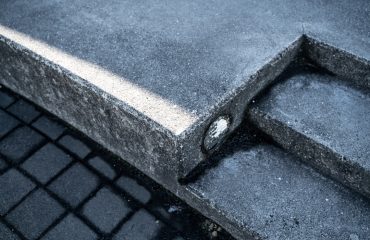Annealed wire, a marvel of metallurgical engineering, plays a crucial role in countless industries. Its unique properties, achieved through a controlled heating and cooling process, make it incredibly versatile and adaptable to a wide range of applications. This post delves into the fascinating world of annealed wire, exploring its characteristics and its significant contributions to modern manufacturing and technology.
Understanding the Annealing Process and its Impact on Wire Properties
The annealing process is the key to understanding the superior qualities of annealed wire. It involves heating the wire to a specific temperature, holding it at that temperature for a predetermined time, and then slowly cooling it. This controlled heating and cooling cycle alters the wire’s microstructure, reducing internal stresses and improving its ductility (ability to be drawn or stretched) and malleability (ability to be shaped). The result is a wire that is significantly more pliable and less brittle than its unannealed counterpart. Different annealing techniques, such as stress-relief annealing, process annealing, and full annealing, are employed depending on the desired properties and the type of metal used. The choice of annealing method directly impacts the final tensile strength, elongation, and overall performance of the wire.
Annealed Wire in the Electrical Industry: Power and Precision
The electrical industry is a major consumer of annealed wire. Its high conductivity and ductility make it ideal for various applications, including:
- Wiring in electrical appliances and electronics: The flexibility of annealed copper wire makes it easy to handle and install in intricate circuits, ensuring efficient power transmission.
- Power transmission lines: While often reinforced, annealed copper or aluminum wires form the backbone of power grids, conveying electricity over long distances with minimal energy loss.
- Coils and transformers: The ability to bend and shape annealed wire without breaking is essential for creating precisely wound coils and transformers, crucial components in power management.
- Electromagnets: The high conductivity and malleability of annealed wire facilitate the creation of electromagnets used in various applications, from motors to scientific instruments.
The precise control over the annealing process ensures that the wire meets the stringent electrical conductivity requirements of these applications.
Annealed Wire in Manufacturing: From Springs to Automotive Components
Beyond the electrical sector, annealed wire finds extensive use in manufacturing. Its malleability and strength are exploited in numerous products, including:
- Springs: Annealed steel wire is a cornerstone of spring manufacturing. The annealing process ensures the wire can be easily formed into intricate spring shapes while retaining its resilience and ability to return to its original form after deformation.
- Wire mesh and fencing: The ductility of annealed wire allows for the creation of strong yet flexible wire mesh used in construction, security, and industrial applications. The ease of weaving and shaping makes it a cost-effective material.
- Automotive components: Annealed steel wire is used in various automotive parts, including seat frames, suspension systems, and brake lines. Its combination of strength and flexibility makes it suitable for these demanding applications.
- Welding wire: Annealed wire is often used as filler material in welding processes, contributing to the strength and integrity of the weld.
The precise control over the annealing process allows manufacturers to tailor the wire’s properties to meet the specific requirements of each application.
Medical Applications of Annealed Wire: Precision and Biocompatibility
The medical field demands high standards of purity and biocompatibility. Annealed wire, particularly in stainless steel and other biocompatible alloys, meets these criteria, finding application in:
- Surgical instruments: Annealed wire’s flexibility and strength are crucial in the design and manufacture of surgical instruments, allowing for precise manipulation and durability.
- Stents: Annealed wire, often made from nitinol (a nickel-titanium alloy), is used in the creation of stents, small mesh tubes that are inserted into blood vessels to keep them open.
- Orthopedic implants: Annealed wire can be incorporated into orthopedic implants, offering strength and flexibility for bone fixation and support.
- Dental appliances: Annealed wire is used in various dental appliances, including braces and retainers, providing the necessary strength and flexibility for gentle yet effective tooth movement.
Strict quality control and specialized annealing processes ensure the biocompatibility and safety of annealed wire used in medical devices.
Choosing the Right Annealed Wire: Material and Properties
Selecting the appropriate annealed wire depends on the specific application and desired properties. Different metals, including copper, aluminum, steel, and various alloys, are annealed to achieve specific characteristics. Factors to consider include:
- Material: The choice of base metal dictates the wire’s strength, conductivity, and corrosion resistance.
- Diameter: The wire’s diameter impacts its strength and flexibility.
- Tensile strength: This measures the wire’s resistance to stretching or breaking.
- Elongation: This indicates the wire’s ability to stretch before breaking.
- Annealing temperature and time: These parameters influence the final properties of the annealed wire.
Working closely with a reputable wire supplier is essential to ensure the selection of the optimal annealed wire for any given application.
In conclusion, annealed wire is a versatile and indispensable material across diverse industries. Its unique properties, achieved through the precise annealing process, allow it to meet the demanding requirements of applications ranging from power transmission to medical implants. Understanding the nuances of annealing and the various types of annealed wire available is crucial for engineers and manufacturers seeking optimal performance and reliability in their products.
SEO Tags: annealed wire, wire applications, annealing process, electrical wire, manufacturing wire, medical wire




